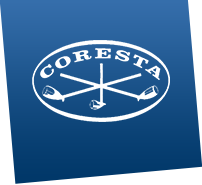Bull. Spec. CORESTA Congress, Brighton, 1998, p. 120, P06
Modeling the long-range transport of the sporangiospores of Peronospora tabacina using the Mesoscale Atmospheric Simulation System (MASS model)
North Carolina State University, Dept. of Plant Pathology, Raleigh, NC, USA
The Mesoscale Atmospheric Simulation System (MASS model) was used to simulate the transport of Peronospora tabacina spores. The model-forecast position of the dispersing spore cloud was compared with ground truth disease reports and meteorological data from an April 1991 scenario. Using Columbia County, Florida as the initial source, 36-hour forecasts were made for the month of April to determine the date of spore arrival in Pierce and Ware counties in Georgia. Plots of surface spore concentrations and wind vectors showed that 8-9 April was the most likely date for spore arrival, approximately one week (latent period) before disease was reported at both sites. The model also provides precipitation forecasts which should be useful in developing a routine to assess the precipitation scavenging (deposition) of spores. Cloud cover forecasts could also help in adding a spore survivability factor to the model.

